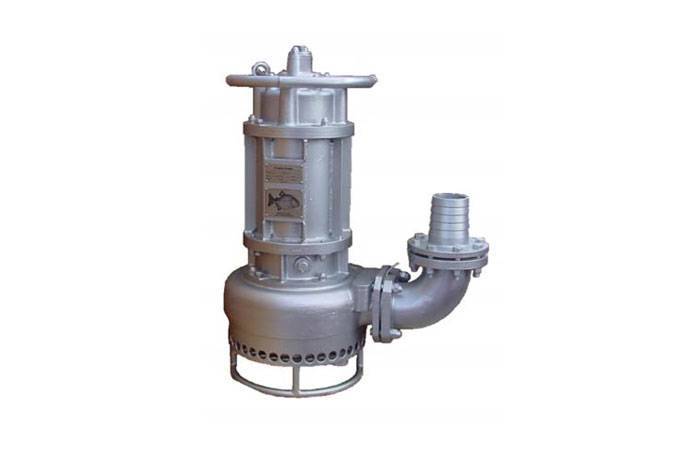What Does a Slurry Pump Do?
A slurry pump exists to pump liquid that contains solid particles. It is sometimes also referred to as a slurry transfer pump. Unlike the more common water pumps, slurry pumps are subject to wear, and they are also more robust and heavy-duty. There are various slurry pumps available in the market, which makes it challenging to select the correct one.
Types of Slurry Pumps
The common types of slurry pumps include submersible, self-priming, and flooded suction. Let's take a look:
1. Submersible slurry pump: Submersible slurry pumps are placed at the bottom of a tank, pond, lagoon, or any water-filled environment. The motor submerges into the slurry. A mechanical seal prevents high-pressure water and impurities from entering the motor cavity. The motor's stirring impeller makes the slurry pour into the pump automatically.
The materials get taken in from the intake and passed through a hose connected to the discharge valve.
2. Self-priming slurry pump: This type of slurry pump operates on land with a hose connected to the slurry pump's intake valve. The self-priming pump takes in the slurry to the pump and then discharges the material from there.
3. Flooded suction pump: The flooded suction pump is connected to a hopper or tank and uses gravity to move slurry and other liquids from the enclosure. This type of pump finds placement below or at the bottom of the water. The pump then uses gravity, continuously fills up with material, and takes it outside through the discharge valve.
How to select the right slurry pump?
Selecting the right slurry pump is essential to get the job done adequately and get the most for the money you have spent.
Your choice of the slurry pump depends on the nature of the slurry requiring a pumping out. The right pump for your specific slurry can help you save on maintenance and repair costs, avoid unnecessary downtime, and create safe working environments.
Four slurry classifications can help determine which pump to select.
Class 1: Mildly Abrasive
Class 2: Slightly Abrasive
Class 3: Significantly More Abrasive
Class 4: Highly Abrasive
When buying a slurry pump, look for the required abrasion-resistant hardness level, material, motor efficiency, motor insulation, cooling criteria, and peripherals such as cables. All these can optimize for the specific performance that you are looking for in your slurry pump. Again, many companies provide flotation platforms for your pump application.
You also need to consider the essential pump components, including the impeller design and size, construction material of the pump, and discharge configurations. The impeller's peripheral speed is also one of the primary features to keep in mind while selecting a slurry pump.
To quote an example, the thumb rule for slurry pump motor power needs to be 1.2 times the slurry pump's shaft power. The reason for doing this is potential power loss caused by the friction between the slurry and the pump body and due to overload operation during the operation of the slurry pump.
Carefully considering these factors will ensure that the slurry pump holds up well against the wear and tear caused by abrasive slurry. The selection of slurry pumps can be more challenging than selecting water pumps or pumps for other liquids.
Slurry Pump vs. Water Pump
There is much difference between slurry pumps and water pumps. The most significant factor that differentiates slurry from other types of fluid is solids' presence within a liquid. The solid material can be copper, gravel, or sand. Although this liquid can be water in some cases, a slurry may contain solvents like alcohol, acids, or petroleum. The presence of these non-water components, regardless of whether they are solvents or solids, is what makes slurry pumps necessary.
In contrast to the narrow and usually inexpensive components of water pumps, the large, replaceable parts of a slurry pump are made from sturdy and usually specialized materials.
Water pumps, on the other hand, do not have the hydraulic capacity to move solid particles. They cannot withstand the particle abrasion and chemical corrosion that slurries often cause, thus eroding the parts of water pumps rather quickly.
What types of slurry pumps are available in the market?
When you are in the market to buy a slurry pump, you will come to understand that there are many different types and models of slurry pumps available. Different types of slurry pumps are used for slurry transportation. Examples include hydraulic ash removal in thermal power plants, metallurgical concentrators, coal slurry, and heavy medium transport in coal washing plants. Other examples are river dredging and slurry lifting in sand washing plants.
The exact slurry pump you will need depends on your purpose. Keep in mind your on-site working conditions before you go ahead and spend money buying a slurry pump.
How can we help?
Piranha's heavy-duty slurry pumps excel in the most demanding applications. Our pumps are ideal for pumping sludge, slurry, and heavily contaminated liquids. Piranha's unwavering commitment to supply quality products that help our customers become more profitable.
Click here to learn more about our slurry pumps.
Piranha Pumps has been in business since 1961 as a representative for various pump manufacturers. In those years, the pumping industry was still evolving, even as newer technology started finding ways. As time went on, we found the public was missing out on various novel technological advances in pumps and dredging equipment. Piranha Pumps then transitioned into a manufacturer for pumps and now boasts an inventory of over 75 different pumps and pumping systems.
Click here to see a video of our agitator slurry pump in action.
If you would like our team to evaluate your pumping requirements for your specific need, call us on (505) 822-0449 or submit your query here.
 PIRANHA
PIRANHA
